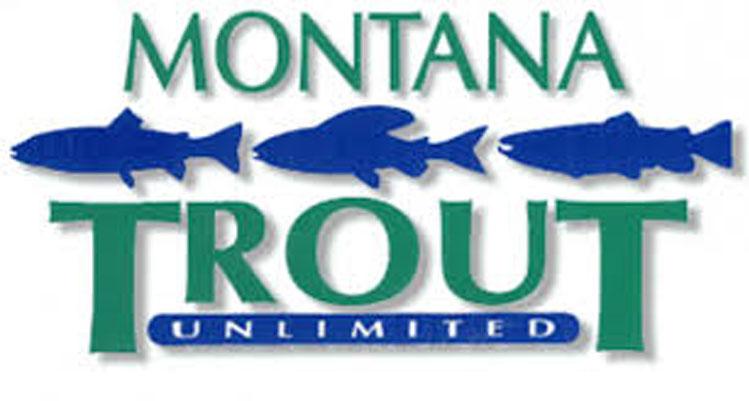Montana in 30 Years: TROUT
Interview with David Brooks, Executive director, Montana Trout Unlimited
In general, how will trout populations in Montana fare in 2049?
Climate projections show that in 30 years, Montana’s streams and rivers will get and stay warmer for longer periods of time. Earlier and diminished spring runoff resulting in lower annual average flow levels throughout the year will drive those temperature changes. That’s bad news for trout.
Trout habitat and range will shrink. The shift from native trout species to non-natives will, in many places, be exacerbated. Due to the stresses of reduced habitat, changing food webs, higher water temperatures, the higher concentrations of water-borne contaminants that are likely to occur with diminished flows (less dilution), and the trend of increasing human movement between waterways means diseases that affect trout are likely to threaten fish health and increase mortality. These factors are part of what is driving Trout Unlimited’s well-established work to improve stream flows, restore habitat, and, generally, keep Montana’s waters clean and cold.

Let’s take it species by species—cutthroat, brown, rainbow and other related fish. What’s the outlook?
Montana’s native westslope and Yellowstone cutthroat trout will both face similar challenges in the future. As has happened in the past 30 years, so will go the next 30. Both of these species of native cutthroat trout are dependent on cold, clean water, as well as long reaches of connected and complex habitat. As mainstem rivers and major spawning tributaries warm and experience longer periods of lower flows, the range and population of both species of cutthroat face reduction.
It’s harder to predict what impact on cutthroat reproduction earlier and changing spring runoff will have on these spring-spawning fish. It’s likely that their life-cycles will be narrowed to fewer and fewer tributaries that maintain the spring spawning habitat and year-round cold temperatures that allow cutthroat to survive. Pure westslope cutthroat range is likely to continue shrinking in western Montana and virtually disappear in the upper Missouri. Yellowstone cutthroat, which once were prevalent down their namesake river to the confluence of the Tongue River, will retreat farther into the headwaters of the Yellowstone and isolated stream and lake systems in Yellowstone National Park.
In addition to shrinking ranges and populations of native cutthroat, these populations are at jeopardy of becoming increasingly hybridized with rainbow trout. Because rainbow trout tolerate higher water temperatures and can spawn in more varied habitat, this wild species of trout will have higher survival, invade more native trout water and, hence, hybridize with native species.
The fate of brown trout is also uncertain. While brown trout can tolerate warmer water conditions, they are fall spawners. Because low, summer flows are likely to extend later into the fall, brown trout might lose spawning habitat and be outcompeted by spring spawning species. In the last few decades, surveys in many Montana trout streams show brown trout moving higher into watersheds. That trend might be reversed if the upper reaches of river systems fail to maintain flows conducive to brown trout spawning in the fall.
Endangered bull trout are more dependent on very clean, cold water than westslope cutthroat. In many ways, bull trout are the best indicator of the health of coldwater streams. In addition to needing very cold, clean water in which to spawn, bull trout tend to migrate long distances during their life-cycle. As temperatures warm and sources of truly cold, clean water diminish, bull trout will lose more spawning habitat and the long stretches of connected habitat necessary for migration.
These trout concerns drive our organization’s work. We are invested in and successful at protecting and restoring tributary streams that are the natal waters for native and wild trout, as well as the supplies of cold, clean water to our mainstem rivers. Our work has led to improvements in native and wild trout habitat and population numbers in systems like the Blackfoot and Clark Fork Rivers.
What are the most significant developments that will affect trout populations over the next 30 years?
In addition to lower flows, warmer water temperatures, and earlier and less spring runoff, trout populations will be affected by diseases that thrive in those same conditions. One example is PKD (proliferating kidney disease), the parasite that killed thousands of whitefish and shut down 150 miles of the Yellowstone River in the summer of 2017.
Algae blooms are a result of increased nutrients, especially nitrogen and phosphorus, in river and lake systems. Lower flows mean that the relative concentration of nutrients, often a result of fertilizer and raw sewage entering waterways through discharges or runoff, is higher. The same goes for any other contaminant in water.
Trout face the development of more and larger populations of invasive, non-native fish that compete for habitat, are better adapted to warmer water, or eat trout. Trout are already suffering impacts from introduced (often illegally) fish such as Northern pike, lake trout, and walleye.
There are some positive developments for trout happening that will hopefully grow in the future. The public is increasingly aware of the importance of native and wild trout, as well as the threats they face. Our state and federal management agencies recognize and, in some ways, are advancing the cause of caring for native and wild trout in Montana. Statewide or watershed-based organizations are working on solutions that meet the needs of trout, healthy streams, and human water use. The angling and outdoor recreation industry are keenly aware of how their economic futures depend on caring for the health of trout and trout streams.
Will trout be genetically modified in some way to withstand likely higher temperatures and the slowing of water flow?
Probably not. Genetic modification through evolution happens too slowly to keep apace of our changing climate and changing stream conditions.
Do you expect that trout sport fishing and licensing will be progressively more restrictive over the coming decades?
It is very possible that negative impacts to native and wild trout populations will demand more restrictive fishing practices and licensing. We already see increasingly regular restrictions on angling when late summer flows drop and high water temperatures are stressing trout. Catch and release trout fishing is almost a universal practice for anglers. Using barbless hooks has gained traction with many anglers, including guides and outfitters, who want to reduce stress on fish. More people who catch trout are abiding by the voluntary practice of “keeping them wet,” such as using nets and quick-release tools so that trout hooked trout stay in the water at all times and hooks are removed from their mouths as quickly as possible. Nonetheless, in the last few decades we can no longer angle for endangered bull trout in Montana (with the exception of a few places and with special permits), for example.

Imagine and describe for us a day of trout fishing in the year 2049. What will it look like?
In the year 2049, it’s possible you will have to pick or apply for a limited number of days on which you can angle for trout in Montana. You will also have to follow rules about the few stretches of mainstem rivers or tributaries in which you can fish. Because bug life will have shifted with the changing climate, you will tie or buy flies unknown to us today. You will use a wireless device that will track your day of fishing and confirm that you are abiding by any relevant place and time restrictions on angling. Your device will also allow you to record water temperature, the species you catch, and their condition. Using a small plug-in for your device, you will be able to sample the water for common contaminants and suspected disease pathogens. Because of the restrictions, catching one will be all the more rare, precious, and primal. You will marvel at the clarity and chill of the water, the algae-free cobble stream bottom, and the smattering of native plants and birds you see.
How can individuals advocate today for protecting the future of trout populations and sport fishing?
At Montana Trout Unlimited we advocate for policy that cares for clean water at the local, state, and federal levels. That entails paying attention and staying involved in all water laws and regulations or laws that affect water quality and quantity. We engage in on-the-ground work that restores streams, increases instream flow, and protects fish. This means working with landowners, water users, managing agencies and other partners to tackle projects that benefit trout and people, such as making an irrigator’s water use more efficient so that more water stays in a river and necessary crops get watered. And, we educate the public, especially young people, the next generation of anglers and conservationists. Working to protect trout is about working to protect clean water. There are not many things more fundamental to our lives and futures than that. Join Trout Unlimited. Get involved with your local chapter.
DAVID BROOKS
most recently served Montana Trout Unlimited as Conservation Director and is now Executive Director. He looks forward to applying his background to studying Superfund sites and watershed issues and to MTU’s mission of conserving and restoring the state’s coldwater fisheries. As part of earning his PhD in history at the University of Montana, David wrote the book on Superfund cleanup of the Milltown Dam site on the Clark Fork. Since moving to Missoula in 2000, he has walked, jogged, peddled, paddled, rowed, hunted, skied, and ogled as many wild places and open spaces in the state as possible.
<< WATCH: Smith River Memories | Montana Trout Unlimited
VIDEO DESCRIPTION: With the specter of a large copper mine hanging over Montana's famous Smith River, Montanans from across the state, including longtime fishing outfitter Paul Roos, outdoor writer Greg Tollefson and well-known Montana artist Monte Dolack share memories from their times on the Smith and encourage others who enjoy this amazing fishery to do the same online. The goal? To show Montana regulators and Montana Governor Steve Bullock that the Smith is too beloved to entrust to Tintina Resources, a foreign-controlled mining company with no history of successfully mining in environmentally sensitive watersheds.












Leave a Comment Here